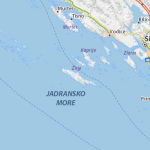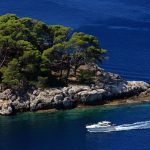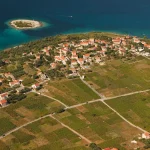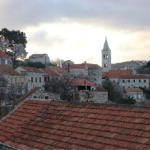Croatia is famous for its islands, both inhabited and uninhabited. And while the exact number tends to vary by definitions and domestic disputes, there are over one thousand of them and they cover a massive area of about 3,300km. Naturally, there is a lot to talk about when it comes to these emerald green paradises which seemingly float on the sparkling Adriatic.
The Elaphiti islands (Croatian: Elafitski otoci) is a small archipelago consisting of several islands which lie just northwest of the city of Dubrovnik. With a land area of approximately 30 square kilometres and a small population of about 850 permanent inhabitants collectively, the islands are a huge attraction for those wishing escape the crowds of Dubrovnik and experience Croatia as it once was. All of the islands are naturally rich with vegetation and are densely covered with evergreen trees. The offer of pristine beaches, natural beauty and quaint fishing communities draw in many visitors, namely from nearby Dubrovnik and the surrounding areas.

The name Elaphiti originates from the Ancient Greek word for deer (Elaphos) which are said to have once inhabited the islands in large numbers. Roman author Pliny the Elder was the first to refer to the islands as ”Elaphiti islands” (Croatian: Jelenski otoci) in his work ”Naturalis Historia” which was published way back in the 1st century.
Three of the Elaphiti islands can be reached by cheap, regular ferry lines from Dubrovnik. These three islands are often referred to as ”the main islands” and are inhabited, with each of them supporting a modest yet ever growing tourist industry.
Starting with ”the big three” let’s take a closer look at each of them…
Sipan (pronounced: Shipan) is the largest of the islands, with a land area of 15.8km and a population of approximately 500 inhabitants. It boasts two settlements, Sipanska Luka to the west and Sudjuradj to the east, both settlements are served by regular Jadrolinija lines from Dubrovnik, which lies 17km away. Sipan is separated from the mainland by the Kolocep channel (Kolocepski kanal). Two limestone crests, with the higher of the two being Velji Vrh (243m) in the northeast and the lower in the southeast surround a dolomite depression in the land, in which figs, vine, olives, almond trees, oranges, various citrus fruits and carob trees have been cultivated for many years. It is best known for the wide array of palm tree species which grow naturally on the island and it was first mentioned by the name of Sipan in 1371, it became a part of Ragusa much later in 1426. Today, the idyllic Sipan can be easily accessed either water taxi, by ferry or as a stop on a popular excursion from Dubrovnik, known as the Three Island Cruise.
(Lopud – www.worldcruisingguide.com)
Lopud, known as ”the island in the middle” (Insula Media, or Mezzo) is the second biggest of the inhabited islands, despite only being 4.63 kilometres in size, it is located between Sipan and Kolocep (Kalamota). It is the most developed of all the Elaphiti islands in terms of tourism and infrastructure, boasting the Lafodia hotel (the old Roman name for Lopud) and various cafes and restaurants along the waterfront. Lopud was the site on which marines and seamen from HMS Saracen and HMS Weazel captured the French garrison, consisting of 6 guns and 59 men back in 1813. The island is arguably best known for its numerous pre-Romanesque churches which date back to the times of Croatian kings back in the 9th and 11th centuries, as well as its large, pristine sandy beach (Sunj), an unusual and welcome addition to an otherwise rugged, rocky coastline. Lopud can be easily reached by water taxi, or by boat from Dubrovnik, including with the previously mentioned Three Island Cruise, as well from closer points on the mainland such as Trsteno, Orasac and Zaton.
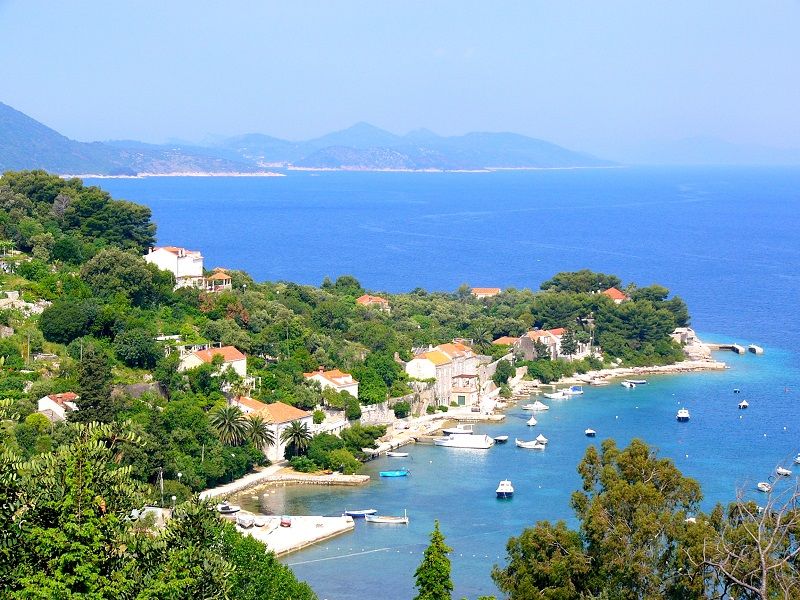
{Kolocep – www.mapio.net)
Kolocep (pronounced: Kolochep) and often referred to locally as Kalamota from the Italian (Calamotta), is the smallest of the main islands with an approximate land area of 2.44 kilometres, it is also the closest to Dubrovnik, located a mere 1 kilometre from the closest point on the mainland and 5 kilometres from the port of Dubrovnik in Gruz. In its day, it was an important shipbuilding site in the Republic of Ragusa, with two of Christopher Columbus’ crew on the Santa Maria being Kolocep natives. Kolocep is one of the most indented and southernmost permanently inhabited Dalmatian island with a population of roughly 294 inhabitants. Much like Sipan, there are two settlements on the island, Gornje Celo and Donje Celo (pronounced: Gornye Chelo and Donye Chelo) which are both situated in coves and connected on land by a 3 kilometre winding walkway. Today, Kolocep is car free and popular with tourists of all kinds due to its reputation for its natural beauty, fine dining and breathtaking coves and swimming areas. Like the neighbouring island of Lopud, Kolocep boasts seven pre-Romanesque churches which date back to the time of the Croatian kings. Kolocep can be reached via the Three Island Cruise in roughly 20 minutes, in approximately 10 minutes via water taxi, or in 20 minutes via regular service from Jadrolinija, the boats Postira and Premuda connect the Elaphiti islands several times throughout the day from Dubrovnik.
Other islands which often fall into the group of Elaphiti islands include:
Crkvina (pronounced: Sirkvina) – an uninhabited islet
Daksa (pronounced: Daksa) – the closest uninhabited islet to Dubrovnik which was once home to a 13 century Franciscan monastery of Saint Sabina, which was subsequently abandoned at the time of Napoleon’s conquest in the early 19th century. Later, the islet became infamous as the site of the horrific Daksa massacre, in which the Partisans (Partizani) executed 48 prominent citizens of Dubrovnik in October 1944. None of those involved in the massacre were ever brought to justice.
Golec (pronounced: Goletch) – an uninhabited islet
Jakljan (pronounced: Yaklyan) – it boasts a recreation center
Kosmec (pronounced: Kosmetch) – an uninhabited islet
Misnjak (pronounced: Mishnyak) – an uninhabited islet
Olipa (pronounced: Olipa) – topped with a lighthouse on its most southern part, Olipa is the westernmost of the Elaphiti islands
Ruda (pronounced: Ruda) – an uninhabited islet
Sveti Andrija / Saint Andrew (pronounced: Sveti Andriya) – an uninhabited rocky island with the status of a bird reserve, the island is covered with very rich naturally occurring vegetation and dons a lighthouse built by the Austo-Hungarian government in 1873.
Tajan (pronounced: Tayan) – an uninhabited islet
With the spring/summer season in Dubrovnik drawing ever closer (although with the current weather all over Europe, maybe it doesn’t feel that way), it’s time to plan your itinerary. With so much to do and see in the living museum that is Dubrovnik, it is understandable that places like the Elaphiti islands can get overlooked, but with more and more people being drawn to the Old City, maybe it’s time to start thinking of your relaxing island escape.

